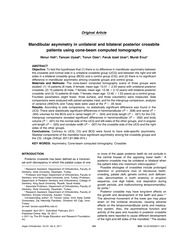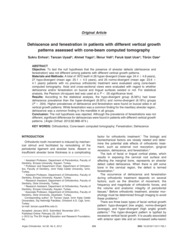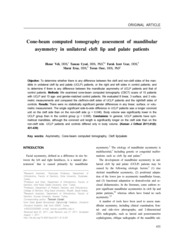Filtreler
Filtreler
Bulunan: 5 Adet 0.000 sn
Ambargo Durumu : Erişime Açık ✕Tür : Makale ✕Eser Sahibi : İLKNUR VELİ ✕ : İLKNUR VELİ ✕Koleksiyon : DİŞ HEKİMLİĞİ FAKÜLT ... ✕Koleksiyon : KLİNİK BİLİMLER BÖLÜ ... ✕Koleksiyon : DİŞ HEKİMLİĞİ FAKÜLT ... ✕İlgili Araştırmacılar : İLKNUR VELİ ✕
 ŞÜKRÜ ENHOŞ
ŞÜKRÜ ENHOŞ





